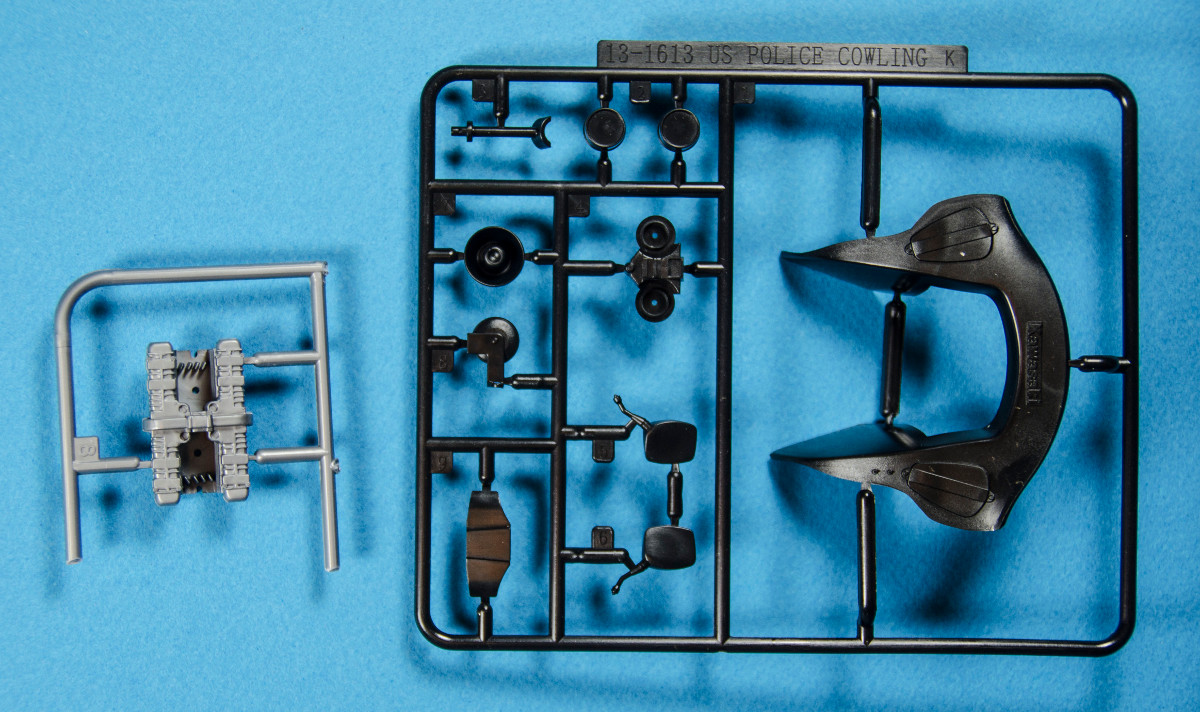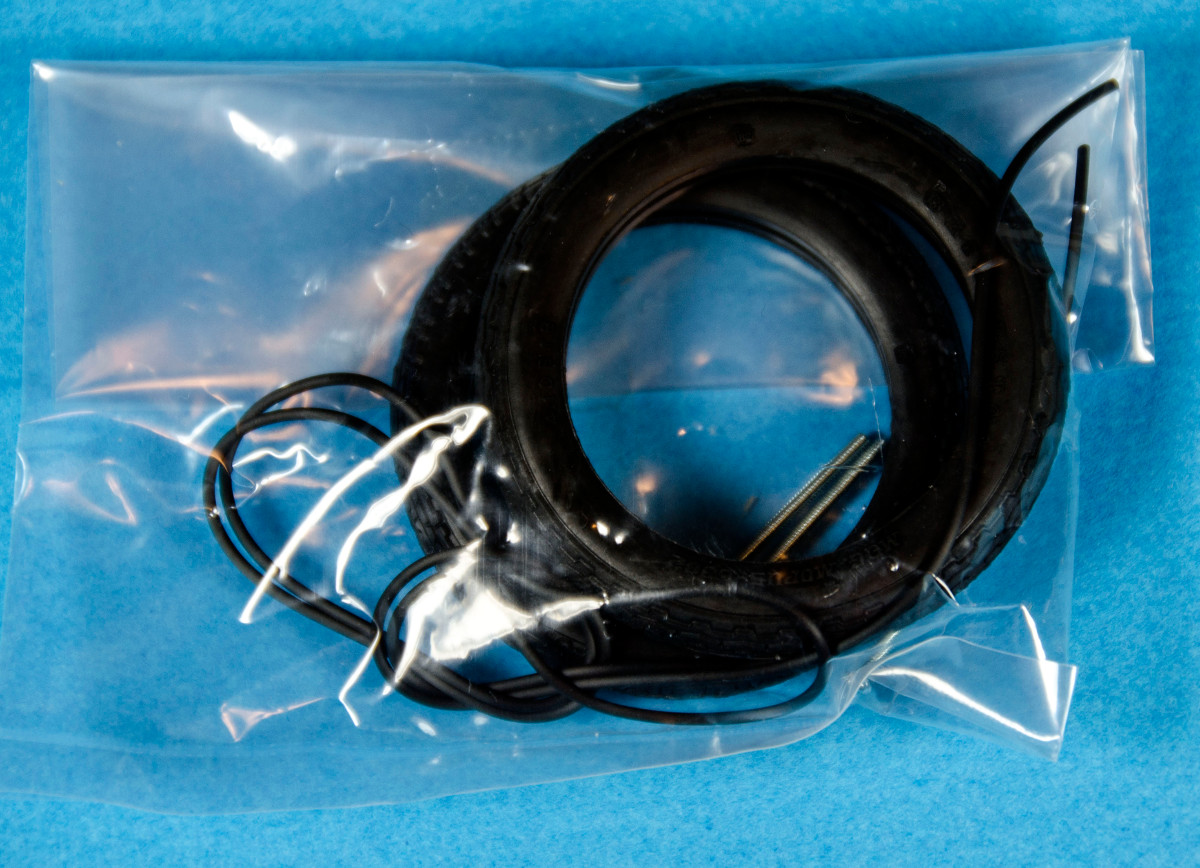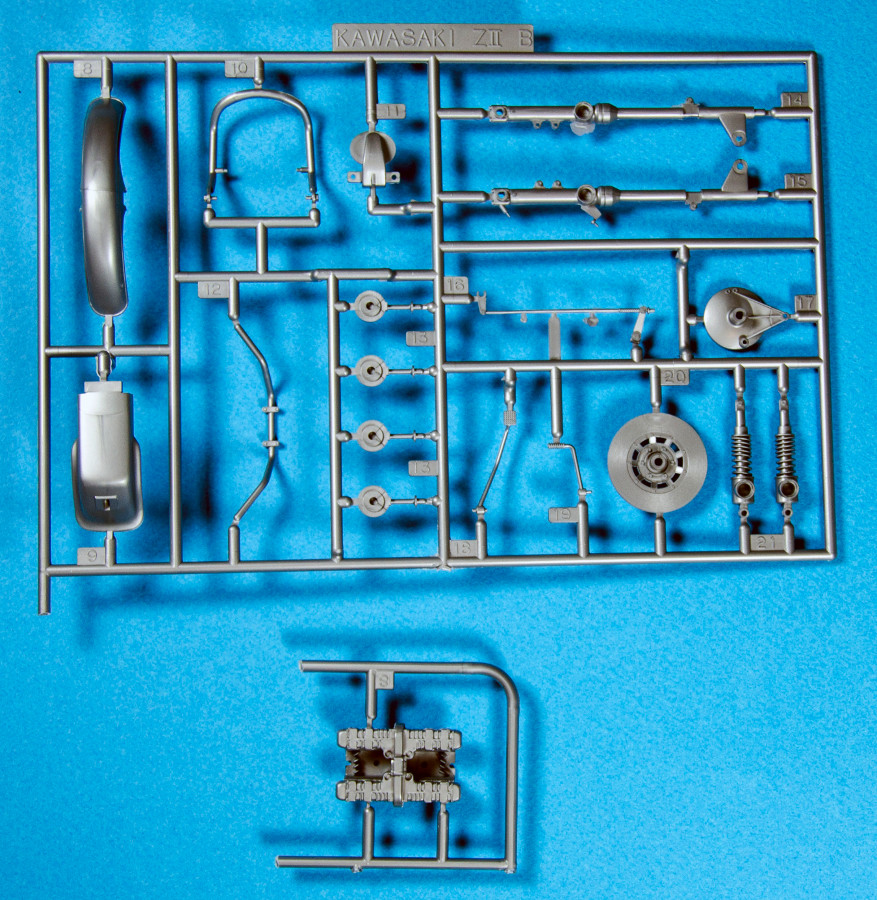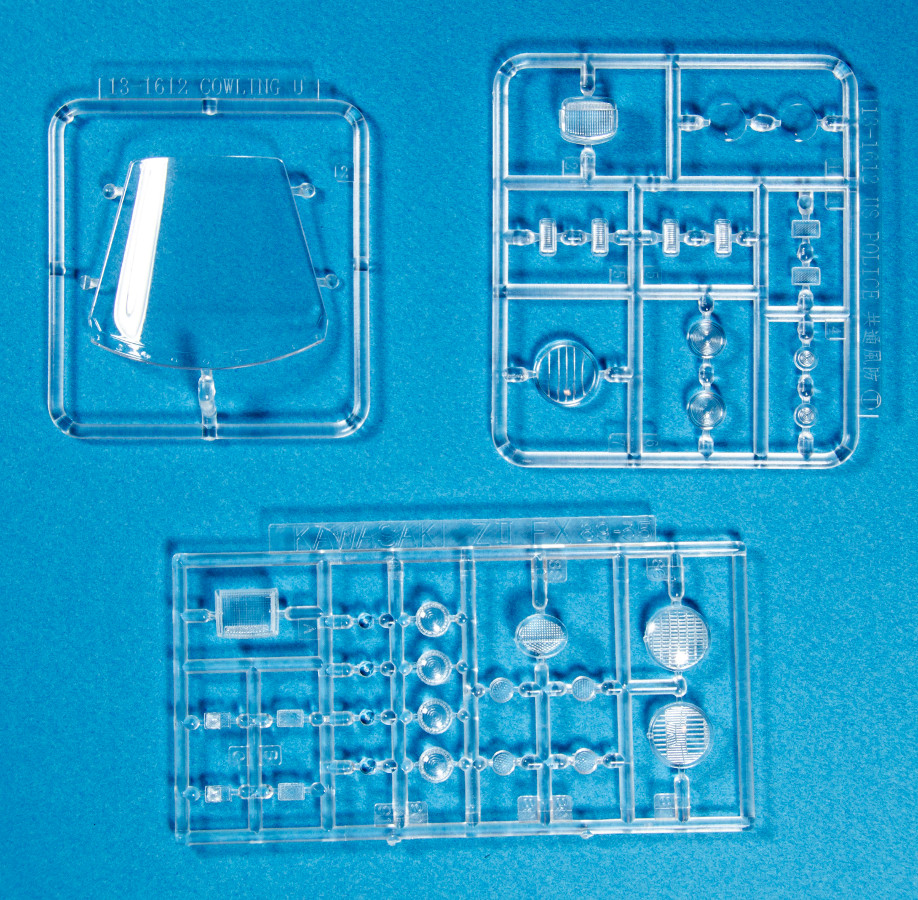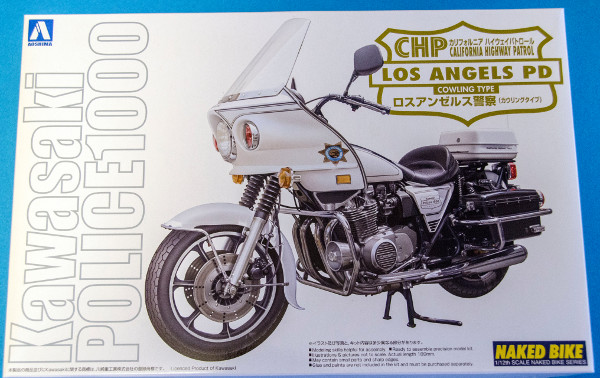
Aoshima 1/12 Kawasaki 1000 Police Bike
By Miles Russell
Introduction
Kawasaki released the Kawasaki Kz1000 in September 1976 as a replacement for the KZ900/Z1. It was powered by a 90 horsepower in-line 4-cylinder engine and had a 5-speed transmission. It was the fastest factory-built motorcycle of the era, with a 140 mph top speed. The Police model was introduced a year later and ultimately became highly revered as fast, smooth, and reliable. Police forces around the world adopted it, perhaps most famously the California Highway Patrol. This led to numerous depictions in popular culture, most famously in the television show "CHIPS." The Kz1000 was also featured in the movies Mad Max (Patrol Officer Jim Goose) and Chain Reaction (Keanu Reeves' character's bike).
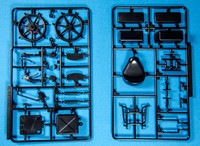
The Kit
The kit is packaged in a white medium size box with smartly designed graphics and an image of the motorcycle. The side of the box features a photograph of a built example. Physically, the box is slightly deeper than the typical Tamiya or Hasegawa motorcycle kit packaging. Upon opening the box the reason for its larger size becomes quickly apparent: it is packed to the brim with 20 individually shrink wrapped parts sprues.
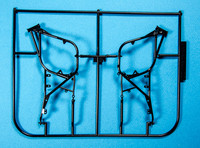
The body work is modeled in a nice white plastic with the majority of the frame, suspension, and engine parts modeled in black and silver/grey plastic. There are also satin and polished chrome sprues. The shrink wrapping is a nice touch which prevents the parts from rubbing or scratching each other. This is important, given the large number of chrome plated parts. Tamiya packages their motorcycles in a similar fashion while some Hasegawa kits may feature all of the sprues in one shrink wrapped package.
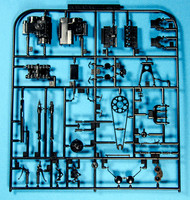
The kit also includes a length of vinyl tubing for the brake plumbing and ignition wiring and two very well modeled rubber tires with excellent tread patterns and sidewall lettering. The single decal sheet features the appropriate California Highway Patrol markings, speedometer face, and license plate.
The decals seem thin, and look sharp and well printed. The lettering is highly legible. There are also 3 screws included used for fastening the wheels and rear suspension arms. One missing item is a mini screw driver for aforementioned screws, something that Tamiya includes with its motorcycle kits.
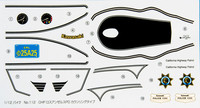
The instructions come in the normal fold out format, and feature a diagram of the sprues and decal locations. The instructions are well drawn and seem reasonably clear. The English translations are crude at best, but the diagrams should be more than sufficient. Color references are included for Gunge brand aqueous and lacquer paints.
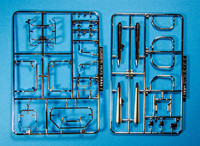
If this kit has a weakness, it is the chrome parts. They are attached to the sprues with questionable attachment points and will require removal and touch up of the chrome during gluing and assembly. The large mufflers are modeled in 3 pieces and ultimately will have large visible seams, should the builder wish to retain the stock plating. The quality of satin chrome plating in my sample left something to be desired, with a some parts, particular the front disc brakes, featuring some flash and texturing issues. Builders should consider removing the chrome completely and using paints like Alclad, especially on the satin chromed parts.
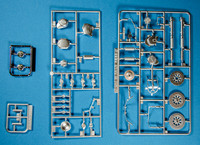
The kit includes numerous optional parts-different suspension parts, front fork, brakes and engine coverings. These optional parts make up more than a quarter of what is included in the box. These parts could be used to depict several versions of the bike. But there is little in the instructions to guide the builder, save from the parts diagram with certain parts greyed out.
From a cursory examination it seems there are sufficient parts to build either a civilian version or a different police version, but some research will be required to figure out which parts to use. There is also an additional cam/valve cover part included on an orphaned sprue. It looks more like an upgrade over the original kit part rather than an optional one, as it is molded with much more with more detail and it looks more accurate when compared with reference photos of the engine.
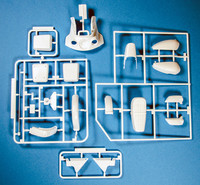
Conclusion
The kit is highly detailed and well molded, with the exception of the questionably chromed parts and some of the sprue attachment points. While it may be a step behind offerings from Tamiya and Hasegawa, this Aoshima kit should reward the patient builder with a convincing replica of an iconic motorcycle. I would like to thank Dragon for providing the review sample.

